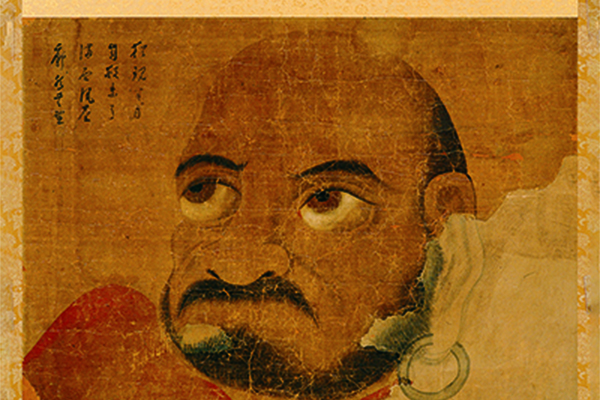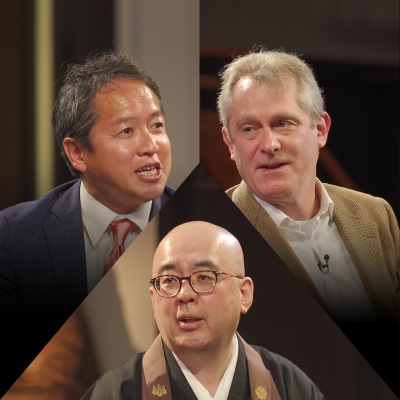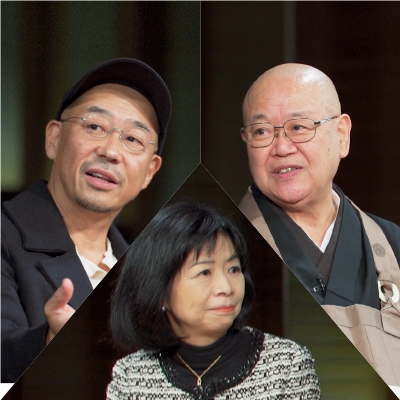
The History of Zen: Discovering the Roots of Sōtō Zen (14)
From Prof. KAGAMISHIMA Genryū’s Zengaku gairon kōgi nōto
(Introduction to Zen Studies Lecture Notes)
Huineng’s Zen in the south taught sudden awakening頓悟*1 and is referred to as “sudden in the south南頓,” while Shenxiu taught gradual awakening漸修*2 and was described as “gradual in the north北漸.” Thus Zen divided into two schools, “sudden in the south” under Huineng and “gradual in the north” under Shenxiu, and these two schools competed with each other. In the Zen school this competition is well known, but modern historical studies show that it was not a historical fact. History reveals that while Shenxiu was always rejected by the later Zen school, in those days it was Shenxiu rather than Huineng who was commonly recognized as the Sixth Patriarch.
His biography shows that Shenxiu was the most learned among the 700 disciples of the Fifth Patriarch Hongren, and moreover excelled in practice as well. The Fifth Patriarch himself is said to have praised him saying, “Look to [Shen]xiu for all the teachings of the East Mountain (Mt. Shuangfeng).” For those reasons the disciples of the Fifth Patriarch all admired Shenxiu. Therefore, he was not a person deserving rejection by the later Zen school.
Huineng taught Zen far away in the south, while Shenxiu taught in the north, where he received the patronage of Empress Wu Zetian則天武后*3 and was honored by her as the Sixth Patriarch. Hearing some of his disciples disparage Huineng, he warned that Huineng was a natural Zen master, and that he would never be the equal of Huineng. He also recommended Huineng to Emperor Zhongzong中宗*4 as the Imperial Teacher. Thus it seems that Shenxiu was not in competition with Huineng for the position of Sixth Patriarch.
This is because there were no issues between Huineng and Shenxiu themselves. The trouble arose from among their disciples. Among Huineng’s disciples was Shenhui (Jpn, Jinne神会, 684–758), who seems to have begun the controversy regarding “sudden in the south and gradual in the north.” Shenhui was insistent that Huineng was the Sixth Patriarch, and that Huineng was the legitimate representative of Zen. In response to this, the disciples of Shenxiu insisted that he was the Sixth Patriarch, and antagonism arose among the disciples of both masters.
The disciples of Huineng and Shenxiu argued over “sudden in the south and gradual in the north.” The lineage of Shenxiu did not flourish afterwards, while many people emerged from Huineng’s lineage. For that reason, in later times the Sixth Patriarch was considered to be Huineng alone, and not Shenxiu. Huineng came to be known as a seminal figure in Chinese Zen.
*1 The attainment of awakening in an instant, without going through gradual stages.
*2 Attaining awakening after going through a graduated series of stages.
*3 The wife of Emperor Gaozong高宗, the third emperor of the Tang dynasty in China.
*4 The fourth emperor of the Tang dynasty.

SPECIAL
ZEN,KOMAZAWA,MANAGEMENT
For our 5th discussion in this series we welcomed guest participant Mr. David Atkinson, CEO of Konishi Decorative Arts and Crafts, for a three-way dis・・・
2020.08.07

SPECIAL
ZEN,KOMAZAWA,MOVIE
For our fourth interview we welcomed film director Tatsushi Ōmori as our guest, and together with Komazawa University Chancellor Seishi Nagai and Prof・・・
2020.03.05

